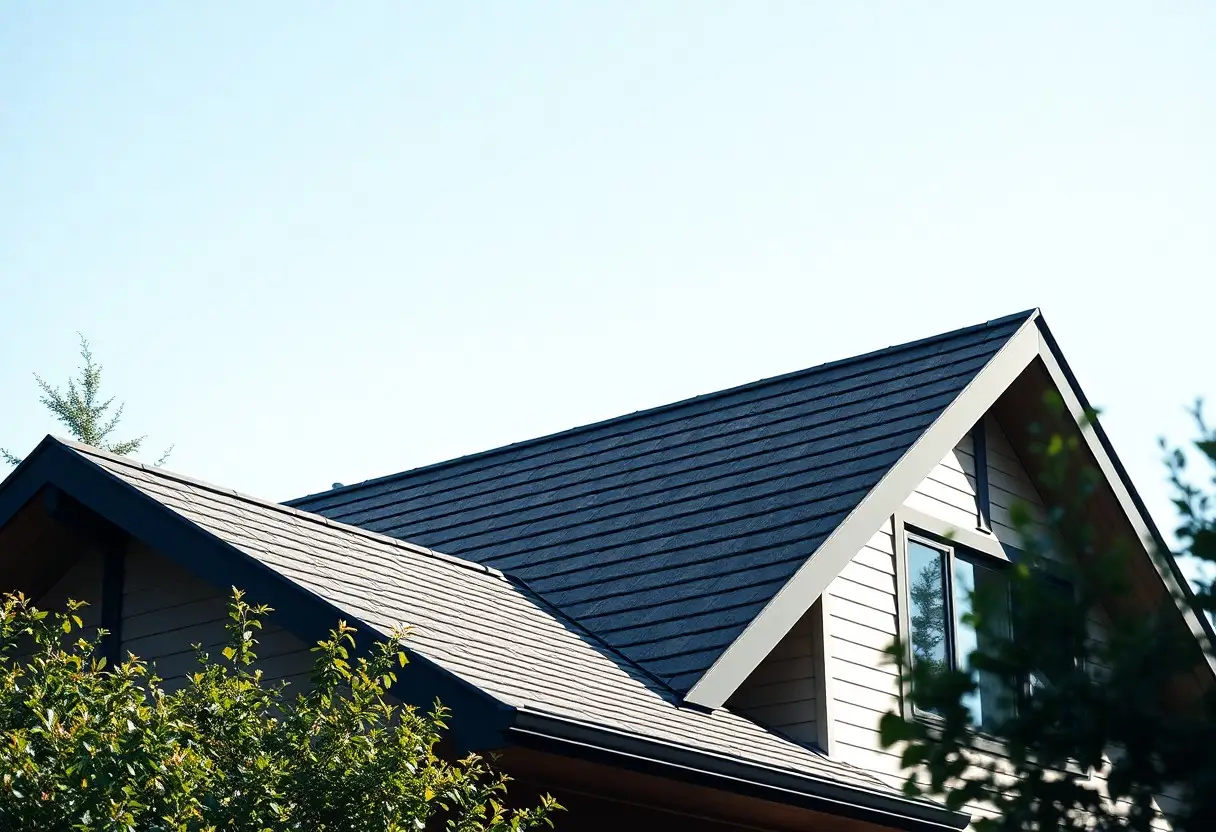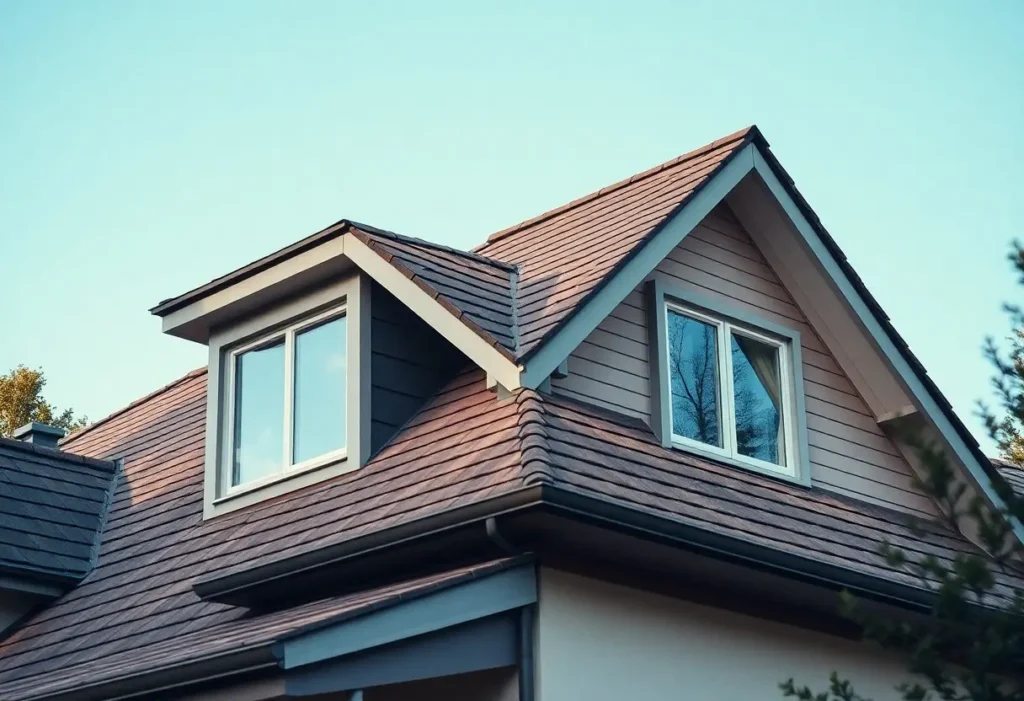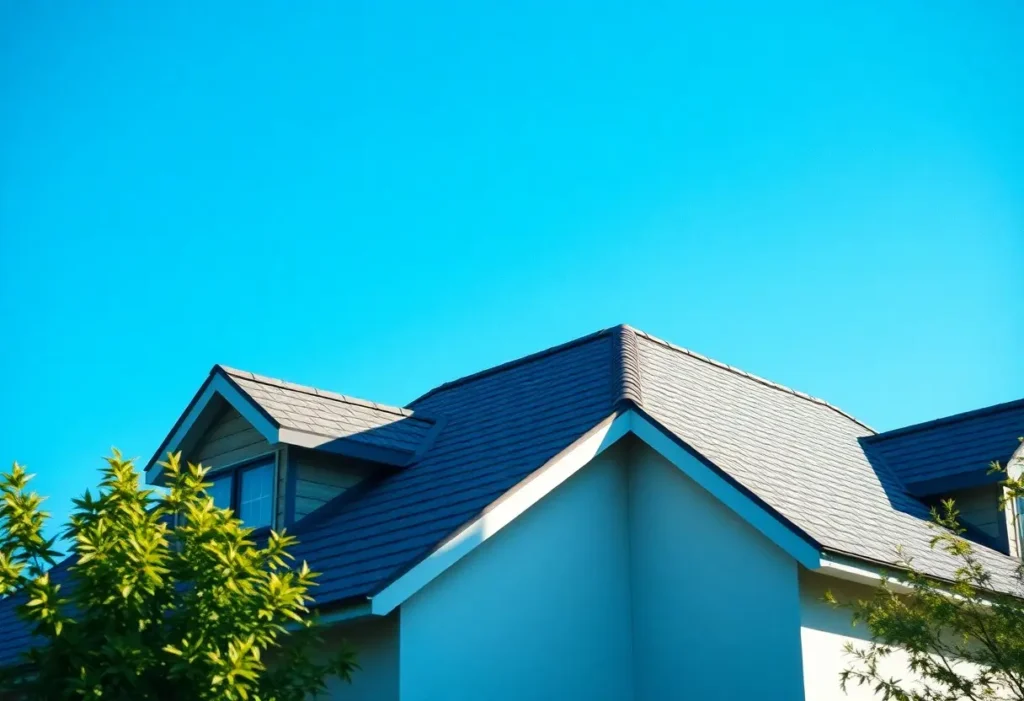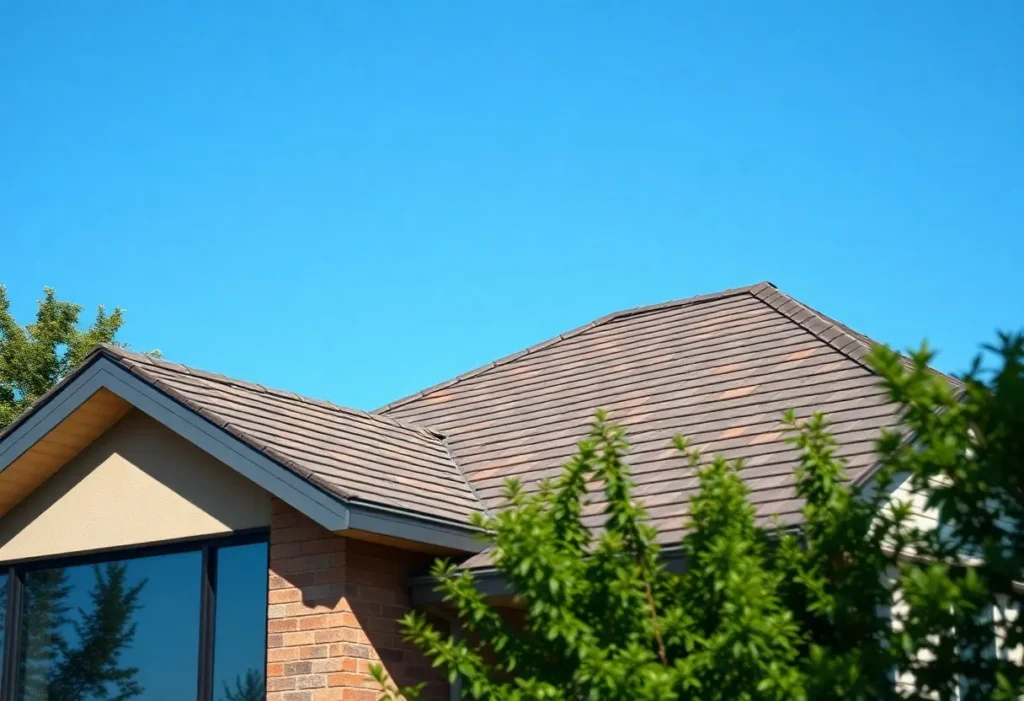What You Need to Know About Low-Pitched Roofs

Low-pitched roofs are a popular choice for many homeowners due to their modern aesthetic and functionality. If you’re considering this type of roofing, it’s important to understand its unique drainage challenges and potential for water accumulation, which can lead to serious issues if not managed properly. However, low-pitched roofs can offer increased energy efficiency and a streamlined look with the right materials and maintenance.
With the help of this article from All Weather Exteriors, we can equip you with knowledge about installation, materials, and long-term care to ensure your low-pitched roof remains durable and stylish for years to come.
Key Takeaways:
- Low-pitched roofs typically have a slope of less than 3:12, which affects water drainage and potential pooling.
- Proper insulation and ventilation are imperative to prevent moisture buildup and extend the roof’s lifespan.
- Common roofing materials for low-pitched roofs include modified bitumen, EPDM, and TPO, each with its own benefits and considerations.
- Regular maintenance and inspections can help identify issues early, such as leaks or material degradation.
- Local building codes may have specific requirements for low-pitched roofs, influencing design and construction choices.
The Architectural Appeal of Low-Pitched Roofs
Design Versatility: Blending Form and Function
Low-pitched roofs can harmonize with various architectural styles, from sleek modern designs to traditional homes. Their gentle slope offers an appealing silhouette, and you can creatively integrate this feature into your building’s overall aesthetic. With the right materials and textures, low-pitched roofs can serve as an elegant crown for the structure, allowing for unique elements such as expansive overhangs that provide shade and protection. This adaptability means that whether your design ethos leans toward minimalist chic or classic elegance, low-pitched roofs can easily complement your vision.
Functionality extends beyond mere aesthetics; low-pitched roofs offer practical advantages in space utilization. The flat nature of these roofs allows for rooftop gardens, patios, or solar panel installations, enabling you to maximize usable outdoor areas. Such integration of function and style not only enhances the visual appeal but also directly contributes to sustainability initiatives, making low-pitched roofs an intelligent choice for eco-conscious homeowners.
Aesthetic Trends: Why Low-Pitched Roofs Are In Demand
Contemporary architectural trends increasingly reflect a shift toward simplicity and clean lines, and low-pitched roofs epitomize this design philosophy. You may find that these roofs align beautifully with urban environments where high ceilings and expansive windows are desirable. Their understated elegance can frame your home without overwhelming the landscape, ensuring that your property stands out without appearing ostentatious. Low-pitched roofs also often work exceptionally well with modern materials, such as metal or green roofing, enabling a seamless integration of natural and industrial elements that captivates the eye.
Moreover, real estate markets are witnessing a growing appreciation for low-pitched roofs as buyers seek properties that embody efficiency and style. With the rise of sustainability, homes featuring these roofs not only look tremendous but are often equipped with energy-saving features that appeal to the environmentally conscious buyer. You’ll notice that many new developments highlight low-pitched roofs as a primary design element, further solidifying their popularity across diverse demographics.
Climate Considerations for Low-Pitched Roofs
Weather Resistance: The Role of Roof Slope in Various Climates
Your low-pitched roof’s design plays a significant role in how it withstands the unique weather conditions of your region. For instance, in areas with heavy snowfall, a low slope can lead to snow accumulation, increasing the risk of leaks and structural stress. Conversely, a steeply sloped roof allows snow to slide off more easily, reducing the potential for ice damming. In regions prone to heavy rainfall, it’s imperative to ensure that your roofing materials and drainage systems are optimized to handle water runoff without pooling, which can cause severe damage over time. Choosing the right materials, such as membranes that are specifically designed for low-pitched roofs, can enhance your structure’s overall durability and performance.
In contrast, in arid climates where heavy winds or storms may occur, low-pitched roofs can be designed with additional reinforcements to prevent wind uplift. The slope can also affect how debris accumulates; steeper roofs may mitigate this issue, while low-pitched designs require more frequent maintenance to clear off leaves, branches, and other materials that might hinder drainage or cause moisture retention. Each climate presents its own challenges, and understanding these factors will help you make informed decisions about your roofing system.
Energy Efficiency: How Slope Affects Heating and Cooling
The angle of your roof significantly influences your home’s energy efficiency by impacting heat retention and ventilation. Low-pitched roofs tend to absorb and retain heat due to their larger surface area, leading to higher temperatures in the attic space. In regions with warm climates, this heat can infiltrate living areas, forcing your air conditioning system to work harder. By ensuring proper insulation and ventilation, you can offset some of this energy loss while minimizing costs. Choosing reflective roofing materials can also help regulate indoor temperatures, reducing cooling needs.
In colder climates, the efficiency levels may vary; while a low-pitched roof can help retain heat, it can also pose challenges during winter months if snow and ice tend to accumulate. Implementing upgraded insulation, paired with high-performance roofing materials, realizes significant savings on heating bills while ensuring comfort throughout the year. Adequate ventilation also plays a vital role in maintaining indoor air quality, thus supporting a healthier living environment in your home.
Addressing energy efficiency goes beyond just slope; integrated systems such as solar panels, which can be strategically incorporated into low-pitched roof designs, provide additional energy savings. Utilizing rainwater collection systems can also enhance the energy efficiency of your home while serving multiple purposes. Consider how these systems can work harmoniously with your roof design, optimizing performance and sustainability, regardless of your local climate conditions.

Maintenance and Lifespan: What to Expect
Regular maintenance is important for maximizing your low-pitched roof’s lifespan. During inspections, you should look for signs of wear, such as ponding water, which can lead to leaks if left untreated. Other common problems include damaged membranes, cracks, or blisters that may develop over time. If those issues are identified early, you can schedule repairs before they escalate into more significant concerns such as structural damage or mold growth inside your home. Providing some routine care can extend the durability of your roof significantly, allowing you to avoid costly replacements.
Common Issues: Identifying Problems Before They Escalate
Being proactive about maintenance, you should routinely inspect the surface of your low-pitched roof for debris accumulation. Leaves, dirt, and other materials can trap moisture, which contributes to potential leaks and the weakening of your roofing materials. Another issue to keep an eye on is your roof’s flashing. Damaged or deteriorating flashing around vents, edges, or chimneys can lead to major water infiltration, impacting not just your roof but the entire structure of your home. If you notice any signs of potential problems, addressing them immediately will save you time and money in the long run.
Longevity Factors: Materials and Design Choices
The longevity of your low-pitched roof heavily depends on the materials and design choices you make. Premium materials like modified bitumen, EPDM, or TPO rubber are known for their long-lasting durability, with life expectancies ranging from 20 to 50 years. On the other hand, budget options may not provide the same level of performance or lifespan. Additionally, your roof’s slope must be carefully considered; a gradual slope encourages adequate drainage and can reduce the incidence of standing water, a common cause of premature failure.
Selecting high-quality materials is a game-changer for the lifespan of your low-pitched roof. Investing in durable options often results in reduced maintenance costs and fewer instances of water damage. Furthermore, the design plays an equally important role; roofs designed with a slight pitch can help facilitate effective drainage and lessen the chances of water pooling. This proactive approach can prevent mold growth and degradation of roofing materials over time, ensuring that your roof remains in top condition. Thus,
- The investment in quality materials and proper design pays off in long-term durability.
- The slopes are important for effective water drainage and the prevention of pooling.
- The drainage systems can improve longevity by redirecting water away from your roof.
Financial Implications: Budgeting for Low-Pitched Roofs
Upfront Costs vs. Long-Term Savings
When planning for a low-pitched roof, entering into the upfront costs is imperative. Generally, materials for low-pitched roofs can range from asphalt and rubber to metal and TPO, with initial investment differences that may surprise you. For instance, while traditional asphalt shingles might seem budget-friendly initially, choosing a higher-end material like standing seam metal could lead to savings in maintenance costs down the road. These high-quality options typically offer greater durability and require less frequent replacements, potentially saving you thousands in the long term.
Additionally, energy-efficient roofing systems can drastically lower your utility bills. By reflecting sunlight and minimizing heat absorption, materials designed for low-pitched roofs can keep your home cooler in summer, translating into reduced air conditioning costs. An initial investment in a more efficient roof could yield annual savings that significantly offset your initial expenditure, providing a balanced approach to your roofing budget.
Insurance and Resale Value Considerations
Your homeowners’ insurance premium can be significantly influenced by the type of roofing you choose. Low-pitched roofs may qualify for specific discounts, particularly if they are constructed from materials known for their fire resistance and longevity. For example, insurance companies may offer lower rates for products that have a Class A fire rating. This can create a favorable long-term financial scenario as the more resilient your roofing materials, the less the risk for insurance companies.
Furthermore, resale value is another vital aspect to ponder when selecting a roofing system. Properties with quality low-pitched roofs tend to hold their value better, especially if they are installed with visually appealing materials. If you’re in an area where other homes feature low-pitched roofs, like Winnipeg, having a well-kept, aesthetically pleasing roof can provide a strong selling point. Buyers appreciate modern, durable roofs, which could enhance your property’s appeal in a competitive market.
In examining insurance and resale value, consider that your choice of roofing can directly affect the perception of your home. Homes with well-maintained low-pitched roofs not only attract buyers but can also lead to higher sale prices. Having a solid warranty on your roofing materials can be another enticing point for potential buyers, reassuring them of quality and durability. Making informed choices not only protects your investment today but can enhance its value for the future, offering peace of mind as you budget for your low-pitched roof.

Innovating for Sustainability: Low-Pitched Roofs and Green Building
Eco-Friendly Materials and Techniques
Your commitment to sustainability can be easily integrated into the design and construction of a low-pitched roof. Consider using recycled and sustainable materials such as reclaimed wood, metal roofs, and eco-friendly insulation options like cellulose or sheep’s wool. These materials often reduce the environmental impact by minimizing resource consumption and waste. Furthermore, adopting techniques that promote energy efficiency during construction can enhance the overall sustainability of your roof. Using advanced sealing technologies and introducing proper ventilation systems can drastically improve the thermal performance of your roof.
Additionally, selecting roofing membranes made from TPO (thermoplastic polyolefin) or EPDM (ethylene propylene diene monomer) can provide reflective qualities that reduce heat absorption, which is vital for energy conservation. Not only do these materials align with sustainable practices, but they also help in cutting down cooling costs during warmer months, enhancing comfort inside your property. By making informed choices when it comes to materials, you pave the way for a roof that’s both eco-friendly and efficient.
Integrating Solar Solutions: Maximizing Efficiency
Low-pitched roofs present an excellent opportunity to harness solar energy effectively. By utilizing solar panels specifically designed for low-slope applications, you can transform an otherwise underused surface into a valuable energy source. These panels help generate renewable energy while expanding your building’s utility potential, reducing reliance on non-renewable resources and subsequently lowering your energy bills.
Strategically positioning solar systems will allow for optimal sun exposure, ensuring maximum energy generation even on low-pitched roofs. For instance, installing panels with adjustable racks can help you adjust the angle based on seasonal sun positions, boosting efficiency throughout the year. This proactive approach pays off; data indicates that buildings adopting solar solutions can see energy savings of up to 30% annually. Over time, this not only contributes to your financial viability but also emphasizes your commitment to sustainable living.
Frequently Asked Questions (FAQs) about Low-Pitched Roofing in Winnipeg
What is a low-pitched roof?
A low-pitched roof is typically defined as a roof with a slope of 3:12 (14 degrees) or less. Low-pitched roofs have a gentle incline that can provide unique design advantages, but they also require specific considerations regarding materials and drainage to ensure long-term performance.
What are the benefits of a low-pitched roof?
Low-pitched roofs offer several advantages, including aesthetic appeal, easier access for maintenance, and the potential for energy efficiency. They can also allow for the integration of additional design elements such as skylights and green roofs, which can enhance the overall functionality and visual appeal of the building.
Are there specific roofing materials recommended for low-pitched roofs?
Yes, low-pitched roofs typically use materials that are designed for water resistance and low-slope applications, such as membrane roofing (like EPDM or TPO), built-up roofing (BUR), or modified bitumen. These materials help to ensure effective water drainage and minimize the risk of leaks, especially during heavy rains.
What are the common challenges associated with low-pitched roofs?
Common challenges include potential water pooling, which can lead to leaks and structural issues if not properly managed. Additionally, maintenance may require more frequent inspections to prevent debris buildup in drainage areas. Low-pitched roofs also may require special considerations in snowy regions to avoid heavy snow loads.
How can I maintain a low-pitched roof effectively?
Effective maintenance for low-pitched roofs includes regular inspections to check for debris, damage, or wear, cleaning gutters and drainage systems, and ensuring that all flashing and seals are intact. Scheduling professional maintenance with highly qualified local roofer like the All Weather Exteriors at least once a year can also prolong the lifespan of the roof and help identify any issues early on.

Hence, understanding low-pitched roofs is vital for homeowners and builders alike.
When considering this type of roofing, you must take into account various factors such as drainage, material selection, and local climate conditions. By selecting the appropriate materials and ensuring proper installation, you can enhance the longevity and efficiency of your roof. It is also imperative to conduct regular inspections and maintenance to prevent issues like water pooling, which can lead to further complications down the line.
In addition, you should be familiar with the unique challenges low-pitched roofs present, such as potential insulation problems and the need for adequate ventilation. By being proactive in addressing these aspects, you can safeguard your investment and improve the overall comfort of your living space. Ultimately, with the right knowledge and approach, you can effectively manage a low-pitched roof, ensuring it meets your needs and withstands the test of time.
Still have questions about low-pitched roofs or ready for a free, no-obligation estimate?
All Weather Exteriors is Winnipeg’s #1 choice for superior roofing solutions. Our experienced team ensures your low-pitched roof is installed or repaired with unmatched quality and lasting durability, specifically designed for our local climate. Don’t compromise on your home’s protection – contact us today and experience the All Weather Exteriors difference!

Leave a Reply
You must be logged in to post a comment.